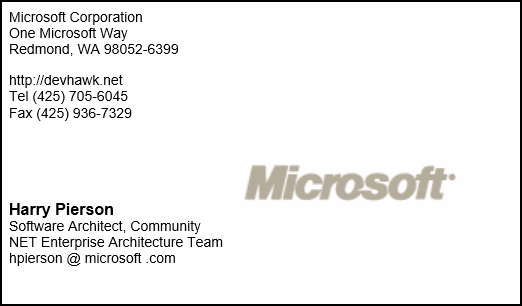One of the cool things about using VPC to host my dev environment(s) is that I can easily dogfood and experiment. For example, I can run my VPC in “undo” mode so that when I shut down, I can choose to merge, keep or throw away all the changes I made to that VPC. This is a great safety net when dogfooding a bunch of different stuff. I’ve got a VPC with Whidbey and Indigo. Instead of creating a separate VPC for Yukon, I can install it into the Whidbey/Indigo VPC and see how well they play together. It does mean I have a long merge cycle when I shut down (assuming I don’t want to rollback the changes) and the VPC is runs slightly slower. But it’s a heck of a lot easier than finding out after the fact that build of this doesn’t work with this build of that.
Even for my “production” dev environments (I have two – client and server), I can make a back up of the entire system as easily as copying the multi-GB virtual hard drive file to a safe location. Of course, it helps that I have 1GB of RAM and nearly 85GB of HD space in my laptop.
The only downside is that actually dogfooding Virtual PC is a bit of a pain. We have prebuilt XP and WS03 images available internally. But since I’m on a later build of VPC, the additions aren’t always compatible with my build. Our website lists “late in calendar year 2004″ for the availability of Virtual PC 2004. So I guess there’s a light at the end of that dogfood tunnel.
